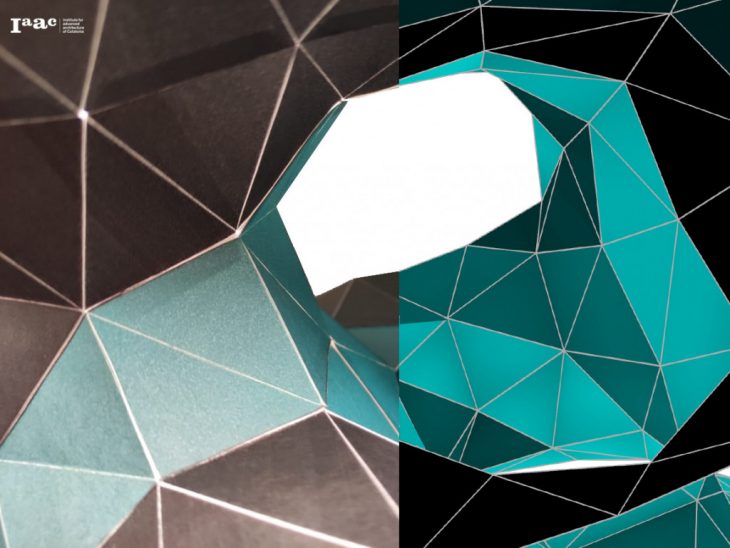 The development and management of complex surfaces is a well-known problem. There are several methods to deal with these problems associated with complex surfaces. For example, making the surface deformable or using rationalization methods through developable strips.
The development and management of complex surfaces is a well-known problem. There are several methods to deal with these problems associated with complex surfaces. For example, making the surface deformable or using rationalization methods through developable strips.
The goal of this project is to apply geometric optimization techniques through machine learning that allow us to move from the 3D model of a minimal surface to a fabricable one, through developable strips.
Workflow

The starting point was creating a geometry in Rhino. Through Kangaroo plug-in we relaxed the surfaces to generate the gyroid. After that, we modified the mesh discretization to make it fabricable. Next, the mesh was rationalized using the shortest path algorithm from NetworkX. This algorithm finds and connects two farthest triangles located on the open edge and then runs through the entire mesh cutting it into a set of continuous strips. Thanks to Hops, it was possible to link our code within grasshopper. After that, we developed the strips, distributed them across the plane, created the tabs, and did the nesting.
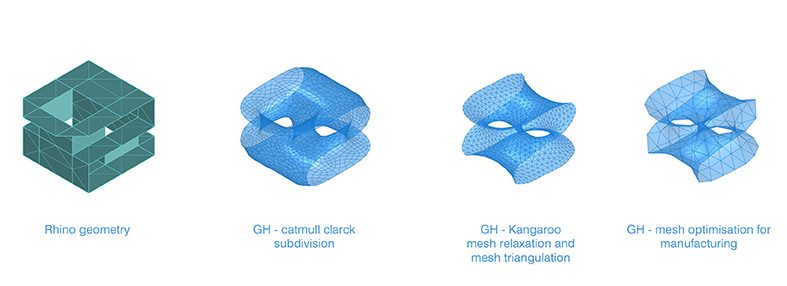
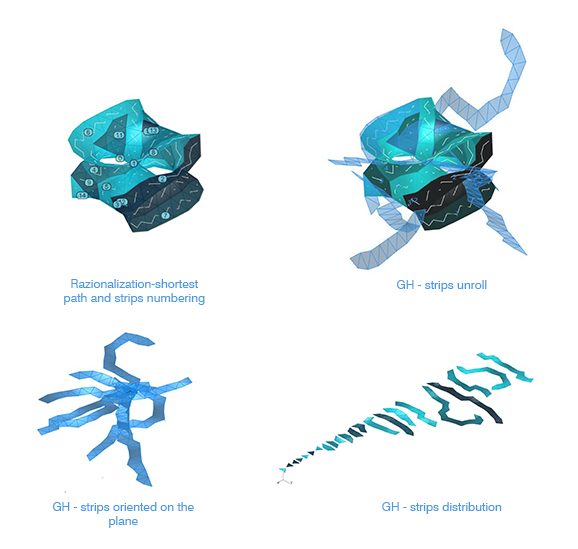
The material used for the model is paper. So, we added tabs that served as mounting elements. The strips are nested on a single A1 sheet.
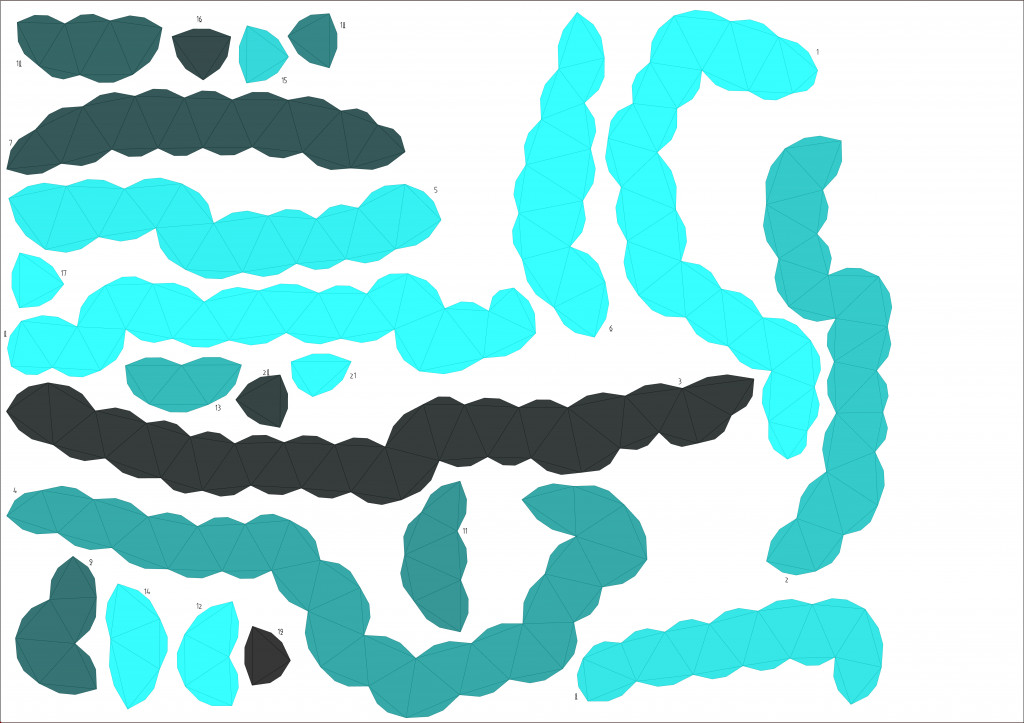
Fabrication
Below, the manufacturing process of the model.


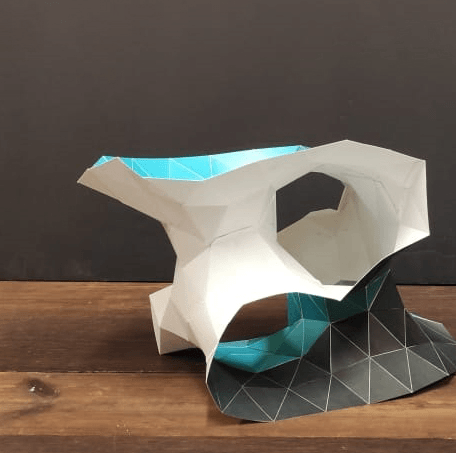
Credits
Minimum surfaces. From 3Dmodel to frabrication is a project of IAAC, Institute for Advanced Architecture of Catalonia developed in the Master in Advanced Computation for Architecture & Design – MaCAD, module Artificial Intelligence in Architecture 2020/21 by Students: Laura Marsillo, Nataliya Voinova, Sergey Kryuchkov
Faculty:David Andres Leon and Dai Kandil